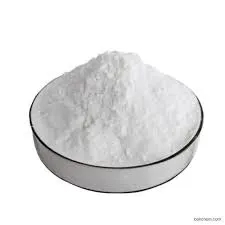- Afrikaans
- Albanian
- Amharic
- Arabic
- Armenian
- Azerbaijani
- Basque
- Belarusian
- Bengali
- Bosnian
- Bulgarian
- Catalan
- Cebuano
- Corsican
- Croatian
- Czech
- Danish
- Dutch
- English
- Esperanto
- Estonian
- Finnish
- French
- Frisian
- Galician
- Georgian
- German
- Greek
- Gujarati
- Haitian Creole
- hausa
- hawaiian
- Hebrew
- Hindi
- Miao
- Hungarian
- Icelandic
- igbo
- Indonesian
- irish
- Italian
- Japanese
- Javanese
- Kannada
- kazakh
- Khmer
- Rwandese
- Korean
- Kurdish
- Kyrgyz
- Lao
- Latin
- Latvian
- Lithuanian
- Luxembourgish
- Macedonian
- Malgashi
- Malay
- Malayalam
- Maltese
- Maori
- Marathi
- Mongolian
- Myanmar
- Nepali
- Norwegian
- Norwegian
- Occitan
- Pashto
- Persian
- Polish
- Portuguese
- Punjabi
- Romanian
- Russian
- Samoan
- Scottish Gaelic
- Serbian
- Sesotho
- Shona
- Sindhi
- Sinhala
- Slovak
- Slovenian
- Somali
- Spanish
- Sundanese
- Swahili
- Swedish
- Tagalog
- Tajik
- Tamil
- Tatar
- Telugu
- Thai
- Turkish
- Turkmen
- Ukrainian
- Urdu
- Uighur
- Uzbek
- Vietnamese
- Welsh
- Bantu
- Yiddish
- Yoruba
- Zulu
10 月 . 12, 2024 01:16 Back to list
Optimal Oxytetracycline Dosage Guidelines for Cattle Health and Treatment
The Use of Oxytetracycline in Cattle Dosage Guidelines and Considerations
Oxytetracycline, a broad-spectrum antibiotic belonging to the tetracycline class, has been widely used in veterinary medicine, particularly in cattle. It's effective against a variety of bacteria, making it a valuable tool in managing infections and promoting overall herd health. In this article, we will explore the dosage guidelines for oxytetracycline in cattle, important considerations, and potential implications of its use.
Understanding Oxytetracycline
Oxytetracycline is commonly used to treat respiratory diseases, mastitis, and other bacterial infections in cattle. Its mechanism of action involves inhibiting protein synthesis in bacteria, thereby preventing their growth and replication. The antibiotic is available in various forms, including injectable solutions, powders, and premixes for feed. The choice of form often depends on the specific condition being treated and the management practices of the farm.
Dosage Guidelines
The appropriate dosage of oxytetracycline may vary based on the specific circumstances of the cattle, including their age, weight, and health condition. Generally, the standard dosage ranges from 6 to 10 mg per kilogram of body weight for cattle. This dosage can be administered either as a single injection or as multiple injections over a course of days, depending on the severity of the infection.
For example, when treating respiratory infections, it is common to administer an initial dose followed by additional doses every 24 hours as needed. The total treatment duration generally spans from 3 to 5 days, but veterinarians may adjust this based on the patient’s response and clinical judgement.
When mixing oxytetracycline into feed, careful calculation is necessary to ensure that each animal receives the appropriate amount of the antibiotic. Typically, the concentration of oxytetracycline in the feed should be around 200 to 400 mg per kg of feed, depending on the level of infection and the condition of the herd.
Considerations for Use
oxytetracycline cattle dose

While oxytetracycline can be effective, several considerations must be kept in mind to ensure its proper use and to mitigate potential risks
1. Veterinary Guidance Always consult a veterinarian before administering oxytetracycline to cattle. They can provide tailored recommendations based on specific health issues, treatment protocols, and weight considerations.
2. Withdrawal Times After treatment with oxytetracycline, specific withdrawal times must be adhered to. Withdrawal time is the period required after the last treatment before the animal can safely be slaughtered for meat or before milk can be sold. Typically, the withdrawal period for oxytetracycline is around 28 days for meat and 120 hours for milk, but this may vary depending on the specific formulation used. Compliance with these guidelines is crucial to ensure food safety and prevent antibiotic residues in meat and dairy products.
3. Antibiotic Resistance The misuse and overuse of antibiotics, such as oxytetracycline, contribute to the growing issue of antibiotic resistance. Farmers and veterinarians should be vigilant in using this medication only when necessary and striving for alternative management practices to reduce disease incidence, such as improving overall herd hygiene and biosecurity measures.
4. Monitoring Side Effects Like all medications, oxytetracycline can cause side effects. Common adverse reactions may include allergic responses or gastrointestinal disturbances. Observing the cattle post-administration can help detect any potential issues early.
5. Legal Regulations It is essential for cattle producers to be familiar with local regulations regarding antibiotic use in livestock. Adhering to these regulations not only promotes responsible use but also aids in maintaining the public's confidence in food safety.
Conclusion
Oxytetracycline remains an important tool in the treatment of bacterial infections in cattle. Understanding the correct dosage, the importance of veterinary oversight, and the implications of its use is vital for animal health and food safety. By using oxytetracycline responsibly and in conjunction with good management practices, cattle producers can effectively support the health of their herds while minimizing risks associated with antibiotic resistance.
-
The Power of Radix Isatidis Extract for Your Health and Wellness
NewsOct.29,2024
-
Neomycin Sulfate Soluble Powder: A Versatile Solution for Pet Health
NewsOct.29,2024
-
Lincomycin Hydrochloride Soluble Powder – The Essential Solution
NewsOct.29,2024
-
Garamycin Gentamicin Sulfate for Effective Infection Control
NewsOct.29,2024
-
Doxycycline Hyclate Soluble Powder: Your Antibiotic Needs
NewsOct.29,2024
-
Tilmicosin Premix: The Ultimate Solution for Poultry Health
NewsOct.29,2024













